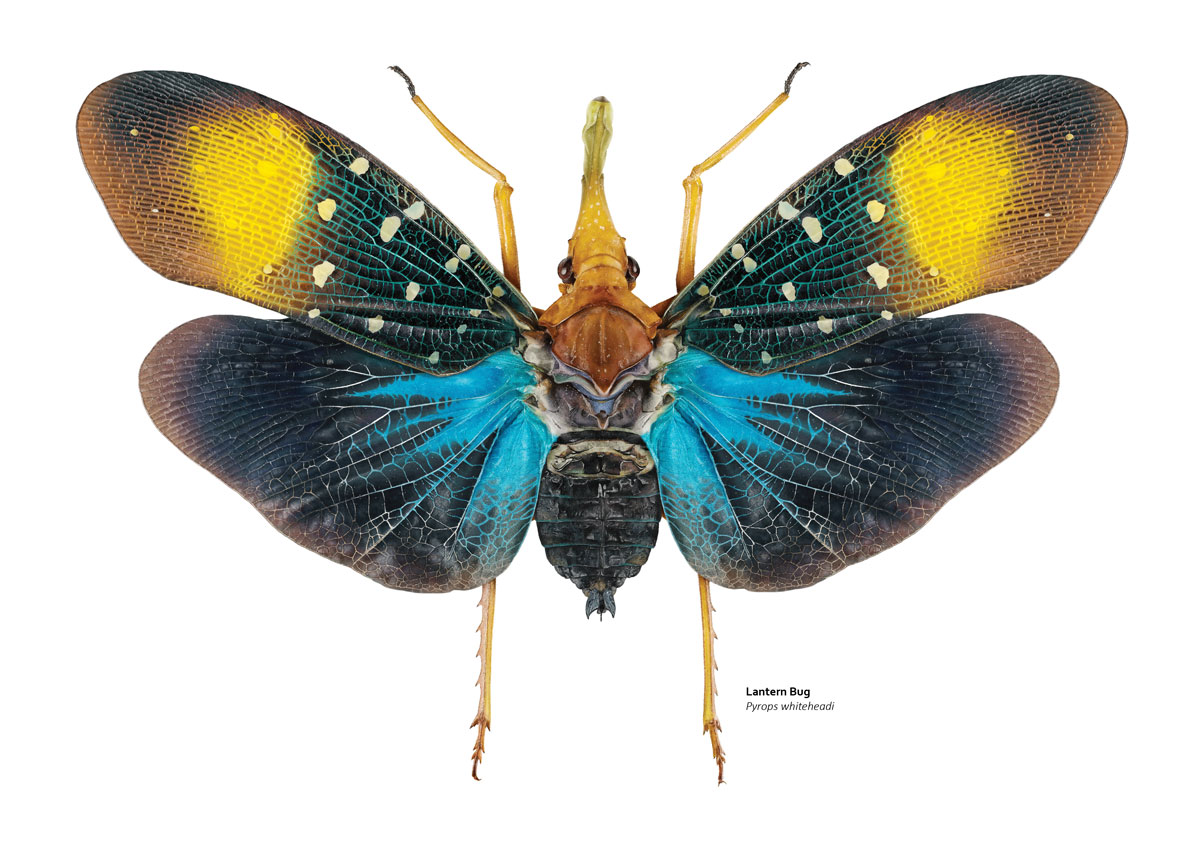Pyrops whiteheadi

| Distribution: | Southeast Asia |
| Size: | 30mm body with 60mm wingspan |
| Diet: | Sap |
Lantern bugs are so called because in 1705 a German naturalist named Maria Sibylla Merian mistakenly thought their conspicuous snouts lit up like miniature lamps. It’s likely she’d confused these bugs with bioluminescent click beetles, but the myth persisted for some time. It’s lucky I wasn’t a naturalist back in those days because I would 100% have started a rumour that grasshoppers are made out of jam.
So, we now know P.whiteheadi‘s elongated snout does not, in fact, light up like someone’s phone in a cinema, so what does it do? Reading online, it seems it could be used to ward off predators, by making the bug seem larger, or acting as a decoy – if a predator bites the hollow snout, the bug’s actual head is unharmed. Let’s also consider the opinion of talented scientific illustrator and self-proclaimed expert Franz Anthony, who, when I asked my esteemed Twitter followers for suggestions, claimed it’s simply for fashion. Case closed.
It took many, many evenings to draw this bug’s beautiful wings, but it’s one of my favourites. I have more specimens from the family Fulgoridae on my list, including the well-known peanut headed lantern bug and one whose snout is serrated – so come back in a year or two and I might have made some progress.
Take a closer look…

